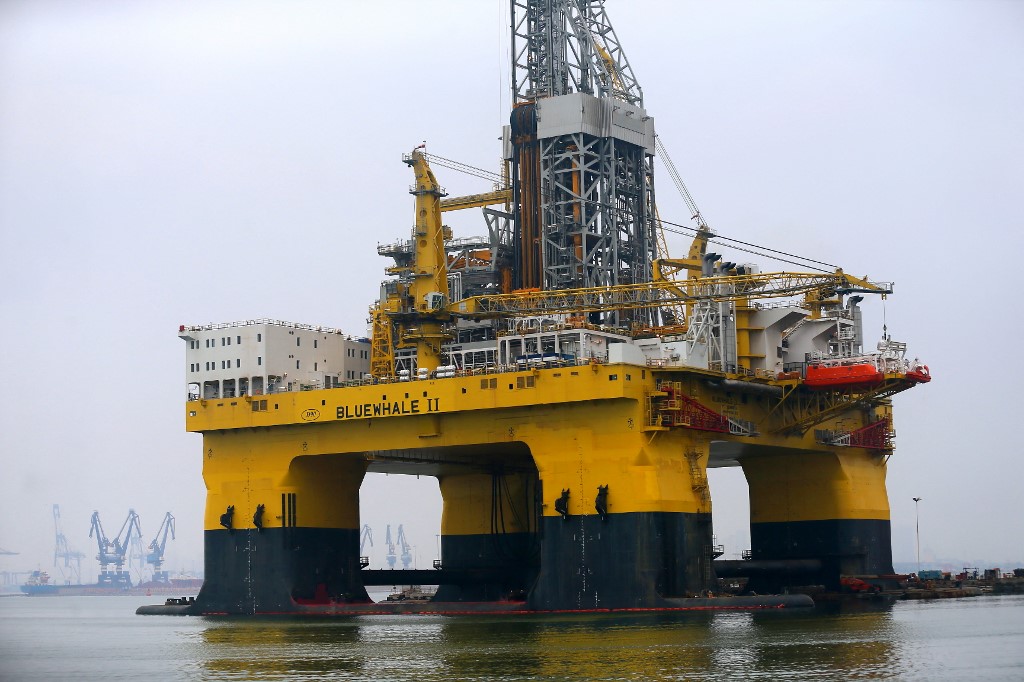(ATF) South China Sea developments are grabbing headlines once again. Chinese state media reported on Thursday that China had drilled deep in the controversial waterway to retrieve sediment core from the seabed.
Chinese scientists on a marine research vessel used a domestically built “Sea Bull II” drilling system to obtain a sediment core 231 meters long at a depth of 2,060 meters, state-run Xinhua news agency said. The system can help explore for natural gas hydrate resources in the seabed, Xinhua added.
The exact location of the drilling wasn’t disclosed, however Beijing claims around 90% of the entire South China Sea in an area often known as its “nine-dash line”, to indicate its alleged territory on a map. This overlaps other South China Sea claimants, including Vietnam, the Philippines, Malaysia, Indonesia, Brunei and Taiwan – and has often led to diplomatic and even military stand-offs in recent years.
China’s drilling comes at a precarious time. Just days earlier, the US sent a naval carrier strike force to the region, raising the geopolitical bar even higher, including the risk of unintended miscalculation between US and Chinese naval vessels that could lead to conflict.
The US, for its part, deployed its naval assets in the area after long-time ally the Philippines voiced concern about some 200 so-called Chinese “maritime militia” vessels amassing in Manila’s UN-mandated 200-nautical mile exclusive economic zone (EEZ).
Beijing in recent years has pressed its South China Sea claims as part of its undisputed national sovereignty, despite a 2016 ruling by a tribunal at the Permanent Court of Arbitration (PCA) at the Hague largely disavowing those claims in favour of the Philippines.
Vietnam is also reportedly considering pressing its own legal case against China for violation of its own 200-nautical mile EEZ, including prohibiting recent oil and gas development by state-run PetroVietnam and its foreign partners.
However, it also appears that Beijing’s aggressive South China Sea push and artificial island development along with accompanying military deployment is as much about oil and gas as it is national pride based on its bid to prove historical ownership.
What lies beneath the South China Sea?
Just how much oil and gas lies underneath the waterway, however, can create as much disagreement as the territorial claims themselves.
One older Chinese estimate places potential oil resources in the South China Sea as high as 213 billion barrels of oil, though many Western analysts have repeatedly claimed that this estimate seems extremely high.
A conservative 1993/94 US Geological Survey (USGS) report estimated the total of discovered reserves and undiscovered resources in the offshore basins of the South China Sea at 28 billion barrels.
‘Reserves’ are considered oil or gas assets remaining in place that are well known and have been discovered by exploratory drilling. Reserves must also be extractable at a net profit at market prices with current technology, optimally in a politically stable area.
‘Resources’ on the other hand are deposits that do not meet one or more of the criteria for reserves. There are different classifications of reserves, which are related to their degree of certainty.
According to the 1993/94 USGS estimate, natural gas is more abundant in the area than oil, placed around 60%-70%. It also estimates the sum total of discovered reserves and undiscovered gas resources in the offshore basins of the South China Sea at 266 trillion cubic feet (tcf).
State-owned oil and gas major China National Offshore Oil Company (CNOOC), the country’s largest offshore driller and producer, estimates that the area holds around 125 billion barrels of oil and 500 tcf of gas in undiscovered areas, although the figures have not been confirmed by independent studies.
However, according to a newer USGS study in 2010, there is a 95% chance that there is at least 750 million barrels of oil in the South China Sea Platform, a median chance of around 2,000 million barrels, and a low probability (5%) of over 5,000 million barrels.
The South China Sea Platform, according to geologists, is an area rich with source carbon and has the perfect geological conditions necessary for hydrocarbon development, particularly oil. It includes the area containing the Spratly Islands, Dangerous Ground, and the Reed Tablemount – all disputed South China Sea claims.
ALSO SEE:
- Another billion-tonne oil and gas discovery in Bohai oilfield
- China’s massive gas rig ready to go to South China Sea
- US blacklist could bring CNOOC to its knees
- China’s oil thirst outweighs its recent hydrocarbon discoveries
- US targets Chinese individuals, firms amid South China Sea dispute
- US brands Beijing’s South China Sea claims illegal
























